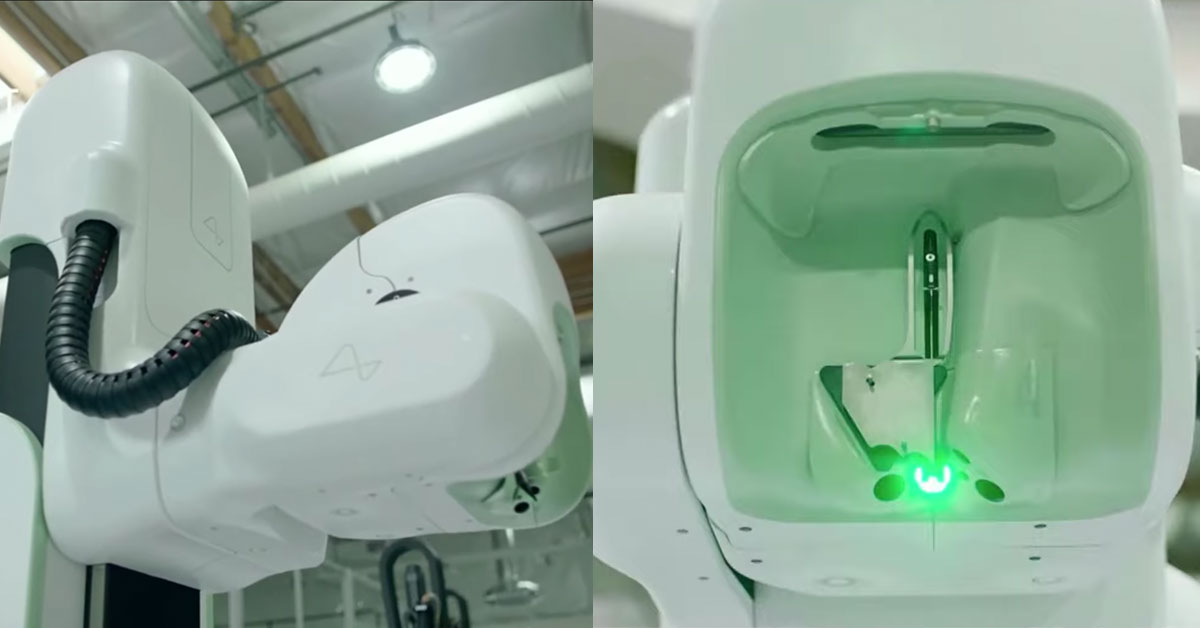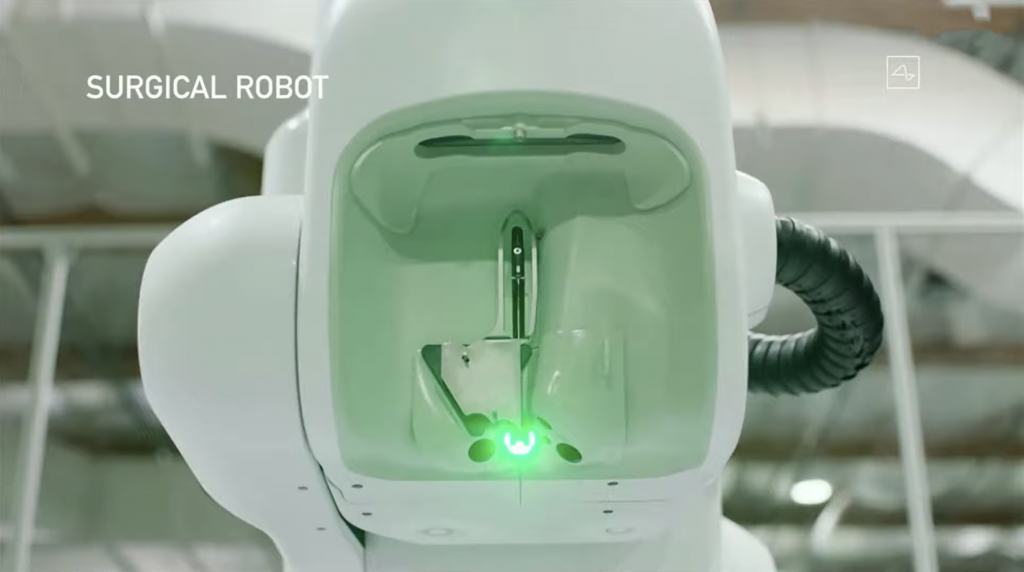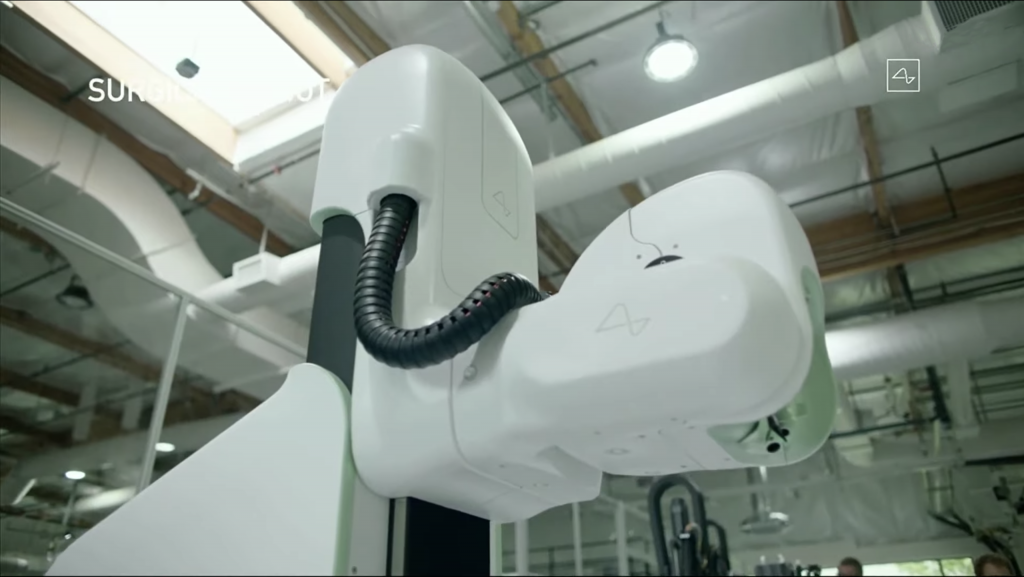Bold dreams, ambitious timelines, delayed deliveries, but universally loved products – Elon Musk is perhaps the most famous innovator of the 21st Century. His dreams, at first glance, may look crazy and out of a Sci-Fi movie. But no matter how late, his vision keeps delivering, and shaping a better future for Earthlings. He revolutionized the private space travel industry with SpaceX, and pioneered the electric car industry to its current state with Tesla Inc. He’s in the news today for a different venture – Neuralink; founded in 2016, the company is opening up new avenues in Brain-Machine Interface (BMI) development.
As futuristic as it sounds, the general idea has been floating around for decades. And we as a species are making progress; Neuralink presented its latest advancements on 28th August, showcasing a novel prototype of an implantable sensor and a neurosurgical robot. They promise a wireless brain implant, even smaller than a coin, that can be placed within your skull in a mere hour with their high-precision neurosurgical robot. The sensor can be controlled via your iPhone, or can be used to control the phone telepathically.
It is kind of like a Fitbit in your skull, with tiny wires.
Elon Musk
Capturing Brain Signals
There are two main methods of capturing brain activity, namely Electroencephalography (EEG) and Electrocorticography (ECoG). The most commonly used one is EEG, a non-invasive method – you don’t drill into the brain, you measure from outside. In this method, brain signals are recorded by placing an electrode array cap on your skull. However, an EEG electrode collects brain signals from several million neurons interacting with each other at once. Thus, the output is a rather hazy version of the brain signal that we are trying to extract.
Electrocorticography (ECoG) is a more invasive method that requires brain surgery. It records the activity of large nerve cell assemblies and has been proven to show promising results in treating patients with epilepsy and ALS. Here, nerve cell activity is measured by placing a single electrode (or an array) into the cortical tissue – i.e. the electrode is inserted directly to the outer layer of the brain by making an incision in the skull. This is the least explored method due to the complexity and dangerousness of the surgical procedures involved. And that’s what Neuralink is doing.
What’s new with Neuralink?
Developing a consumer-grade BMI is a massive interdisciplinary operation. It requires experts in neurosurgery, microfabrication, robotics, software and product design. The latest prototype of the neural link is version 0.9 which is just 23 mm in diameter and 8mm in thickness. The sensor has many flexible polymer ‘threads’, which have the thickness of 1/10th of a human hair. Each thread consists of many electrodes. A single implant has a total of 1024 electrodes (read/write connections) which is by far the highest channel count BMI system built to date.
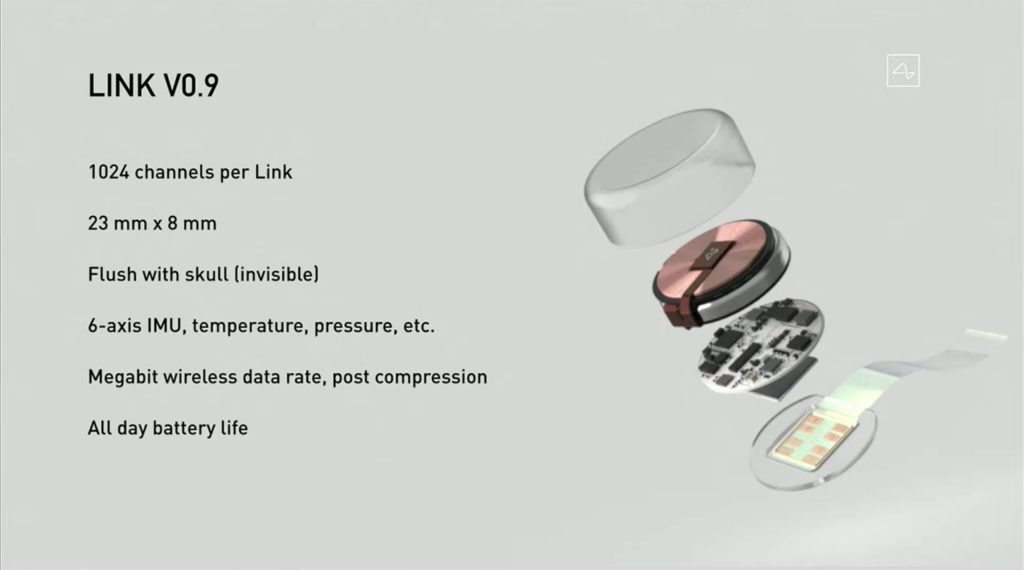
(Image from Neuralink presentation)
As human hands cannot manipulate such delicate wires, each thread is precisely inserted into the brain using Neuralink’s own neurosurgical robot. This robot is a breakthrough device that can insert six electrodes consisting of 192 electrodes per minute at maximum speed.
(Images from Neuralink presentation)
The team presented their experiment with the latest prototype using three pigs at the latest demo. One of the pigs, affectionately named Gertrude, had a link implanted and it demonstrated the ability to obtain real-time brain signals when its snout touched a surface. The implant had been placed in the area of Gertrude’s brain responsible for its sense of smell. The demo showed the implant successfully capturing and transmitting spikes in brain activity when Gertrude’s snout was touching something, such as food in the demonstrator’s hand. Another pig has had a link implanted which has later been removed. The other pig was just used as a control variable in the experiment.
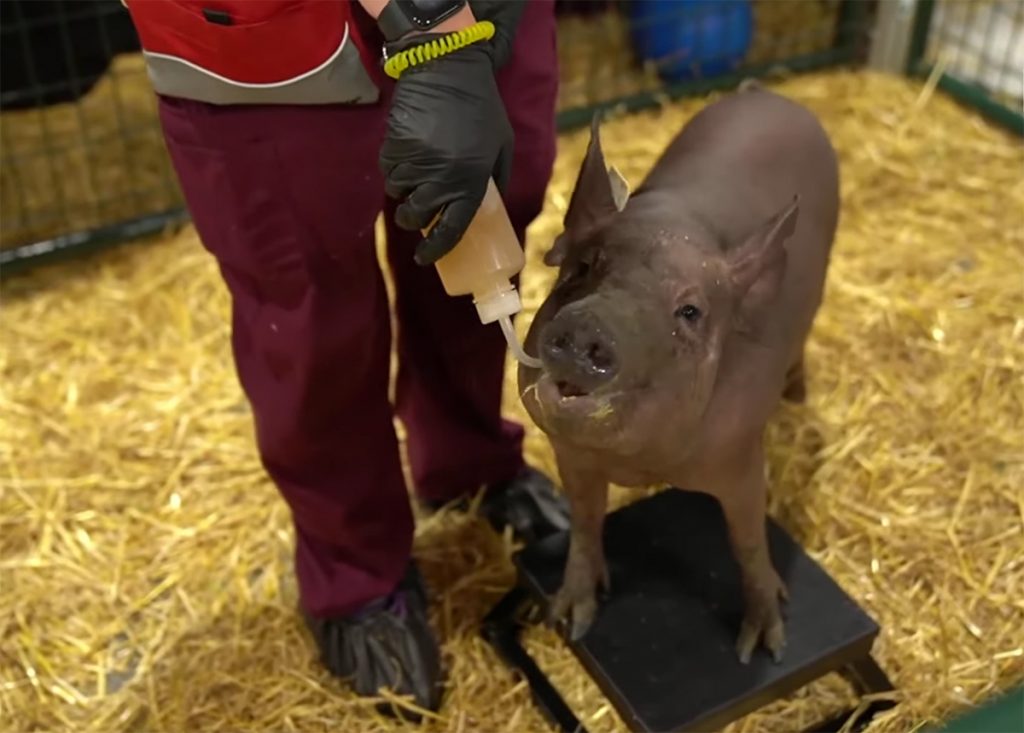
All three of them seemed to be healthy and comfortable. The ones currently having the implant & the other with the removed implant do not demonstrate any divergent behaviour when compared to the regular pig. Hopefully, this shows that the experiment has caused no adverse effects on its participants, based on the evidence presented thus far. They also demonstrated the ability of the present system to closely predict the signals of the brain based on the movement of a pig walking on a treadmill.
The Future
Neuralink has already opened up new possibilities for treating patients with severe spinal cord injuries and other neurological problems such as Parkinson’s, Paraplegia, etc. Musk also hopes to use the device to cure hearing loss, blindness, memory loss and depression. Remember how Iron Man gave James Rhodes (War Machine) an exoskeleton after his injuries in Civil War? Think that, enhanced with a direct link to the brain. It’s no wonder that people call Musk the real-life Iron Man. For now, Neuralink team’s initial applications will be based on simpler medical treatments. As the first step, the aim is to give a paralyzed patient complete control of a mouse and keyboard.
Musk’s ultimate goal is to “create a link between the brain and everyday technology”. This neural link implanted in your brain would ultimately enable you to communicate with your devices by just thinking. It would enable the user to text, browse the internet, or take photographs and videos more easily by communicating directly with your mobile, or artificially intelligent assistant. Musk calls this AI Symbiosis, where a human being lives with computers permanently connected to them, enhancing their capabilities. There is a possibility to create a super AI by merging existing AI technology with the phenomenal capacity of the human brain.
We are still years away from walking around with cool brain implants. There are concerns about the durability of the device, and the reversibility of such intricate brain surgery. There is also a need to integrate a strong, defensive engineering platform to ensure the security of the device. After all, you probably wouldn’t want to give a hacker access right into your brain. All in good time.
